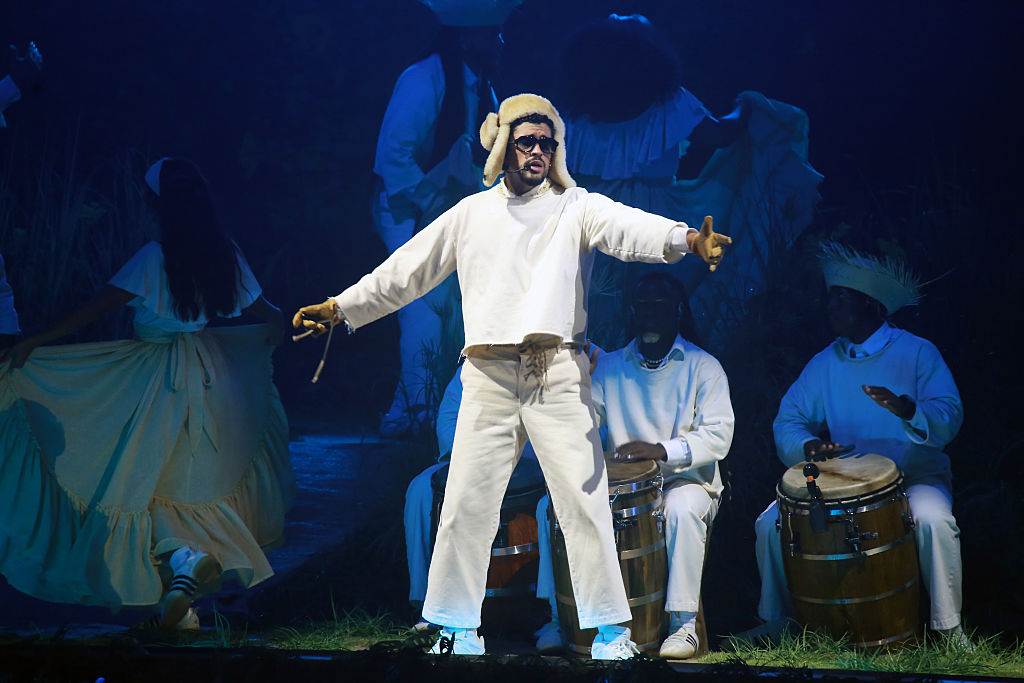For a contemporary arts festival as wide-ranging as Toronto’s Nuit Blanche, having a central theme can help offer a sense of focus and unity, serving as a guide for both audiences and the participating artists. But it can also prove to be a double-edged sword. For as much as a theme can inspire creativity, it can be a hindrance as well.
The latter certainly felt to be the case at this year’s iteration of the dusk-to-dawn festival, held overnight from Saturday evening to Sunday morning, and bound by the theme of “translating the city.”
“Inspired by the multilingual nature of cities, including Toronto, where over 200 languages are spoken, this theme considers the intersections of culture, language, identity and place,” Laura Nanni, Nuit Blanche’s outgoing artistic director, explained in her programming notes. “Translation is not simply the conversion of one language to another, but the connection and understanding it creates.”
Too many artists and curators, however, interpreted the theme much the same way, focusing simply on “translation” as it relates to language. The result: far too many text-based installations that often felt like riffs on the same idea.
Across Nuit Blanche’s three hubs in North York, downtown Toronto and Etobicoke, few installations truly impressed me. But the ones that did were those that explored the notion of translation and change more broadly and holistically.
Take, for instance, Philippe Dépelteau’s “S’imbriquer,” a performance art installation that blended dance, sculpture and movement. Throughout the night, a group of performers constructed and deconstructed a series of brick structures — while their bodies, like wet clay, seamlessly morphed and blended into this environment and each other.
“This is so beautiful. Can we stay longer?” I overheard a child say to their parent beside me, perfectly summing up the emotions and the hypnotism that “S’imbriquer” stirs up.
What made Dépelteau’s piece so beguiling is that it considered “translation” as it relates to urban change and the manufactured landscapes around us. He asked his audience to consider: What does it mean to build cities with intent and care? As well, that “S’imbriquer” was showcased outdoors at Mel Lastman Square, in a neighbourhood that has undergone so many physical changes over the past few decades, only made it all the more powerful.
Meanwhile, over at Humber Polytechnic’s Lakeshore campus in Etobicoke, Laurence Philomène explored the idea of translation and flux through their own eyes, as a trans and non-binary artist. Through a series of colourful photos and videos, imbued with a bubble gum esthetic, Philomène’s autobiographical “5 Years At Home” was a stunning exploration of queer joy.
Also at Humber was the performance art installation “Undersight,” by the multidisciplinary artist Cassils. Whereas “5 Years At Home” demonstrated how translation can be a source of joy, “Undersight” looked at translation as a mode of resistance. Using their body to manipulate a high-powered light projector, Cassils beamed Morse code into the night sky for 12 continuous hours. The messages: the dozens of words and terms banned from government use by U.S. President Donald Trump.
My favourite exhibit, however, was by far “My Name is 張麟發 Tommy Lan Phat Truong 2.0,” an animated short film by the eponymous artist, delving into the interconnectedness of language, culture and identity, and how the meaning of his name evolved through translation.
Still, none of these projects, nor the unseasonably balmy fall weather, could make up for what was a rather disappointing and bland Nuit Blanche. (Even the crowds seemed thinner than in previous years.)
That this disappointment mostly stems from unforced, programming errors is all the more unfortunate. It’s inexcusable, for instance, that this year’s Nuit Blanche, which aimed to highlight Toronto’s cultural and linguistic diversity, didn’t even have a single installation in Scarborough, one of the most diverse regions of the city.
I was also disturbed by the festival’s continued slide into — and embrace of — what I like to call the “Instagramification” of contemporary art. So many pieces had insufficient labels and descriptors. If you wanted to read more about a specific installation or the artist behind it, you often had to scan a QR code that led to a glitchy, unnavigable website. And while there were staff on hand at several major installations, many seemed to have only a basic understanding of the exhibition.
So, whether you wanted to or not, you didn’t have much choice as a viewer but to gawk at the installations, snap a few pictures and move on. This was especially problematic for several installations that were deeply personal or drawn from rich cultural traditions. To merely have a one- or two-sentence descriptor accompanying these works was a disservice to the artists, the art and the audience. In the end, it was quite ironic that for a festival about “translating the city,” so much of it was lost in translation.



